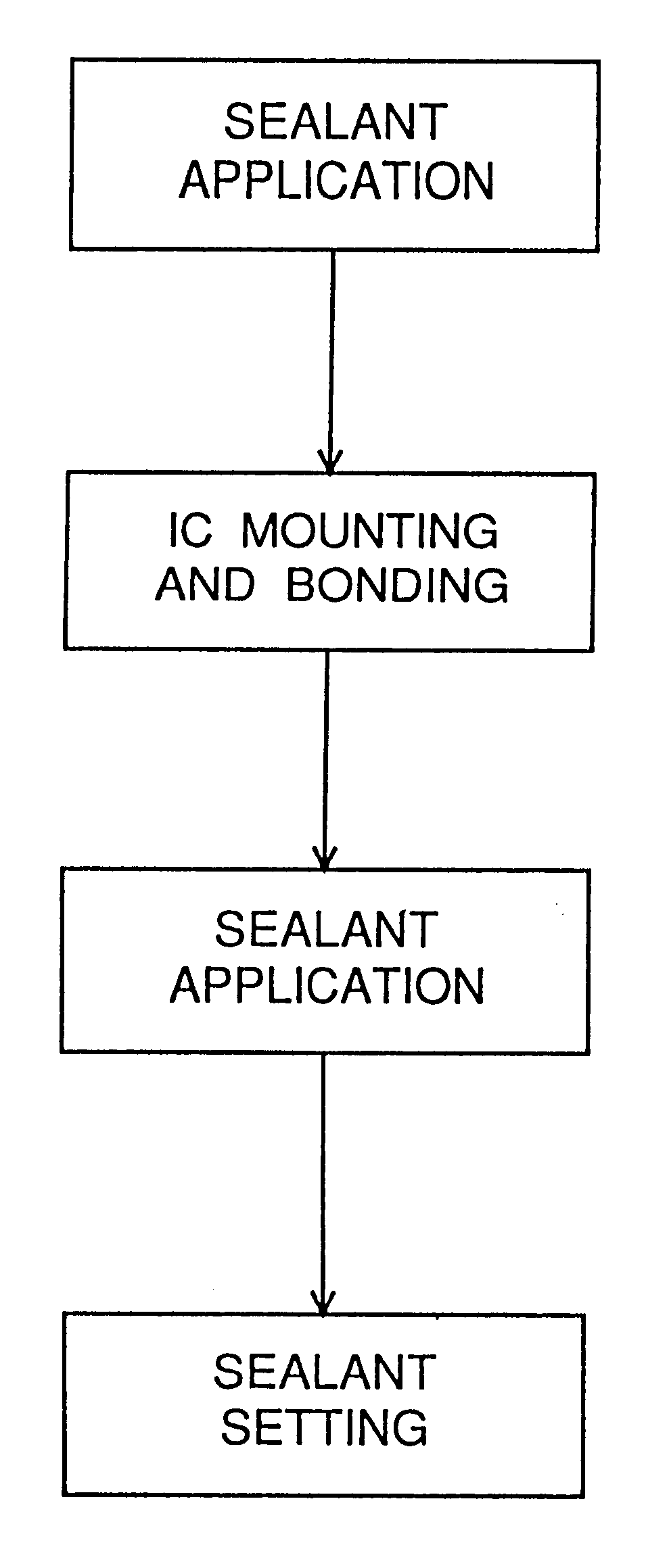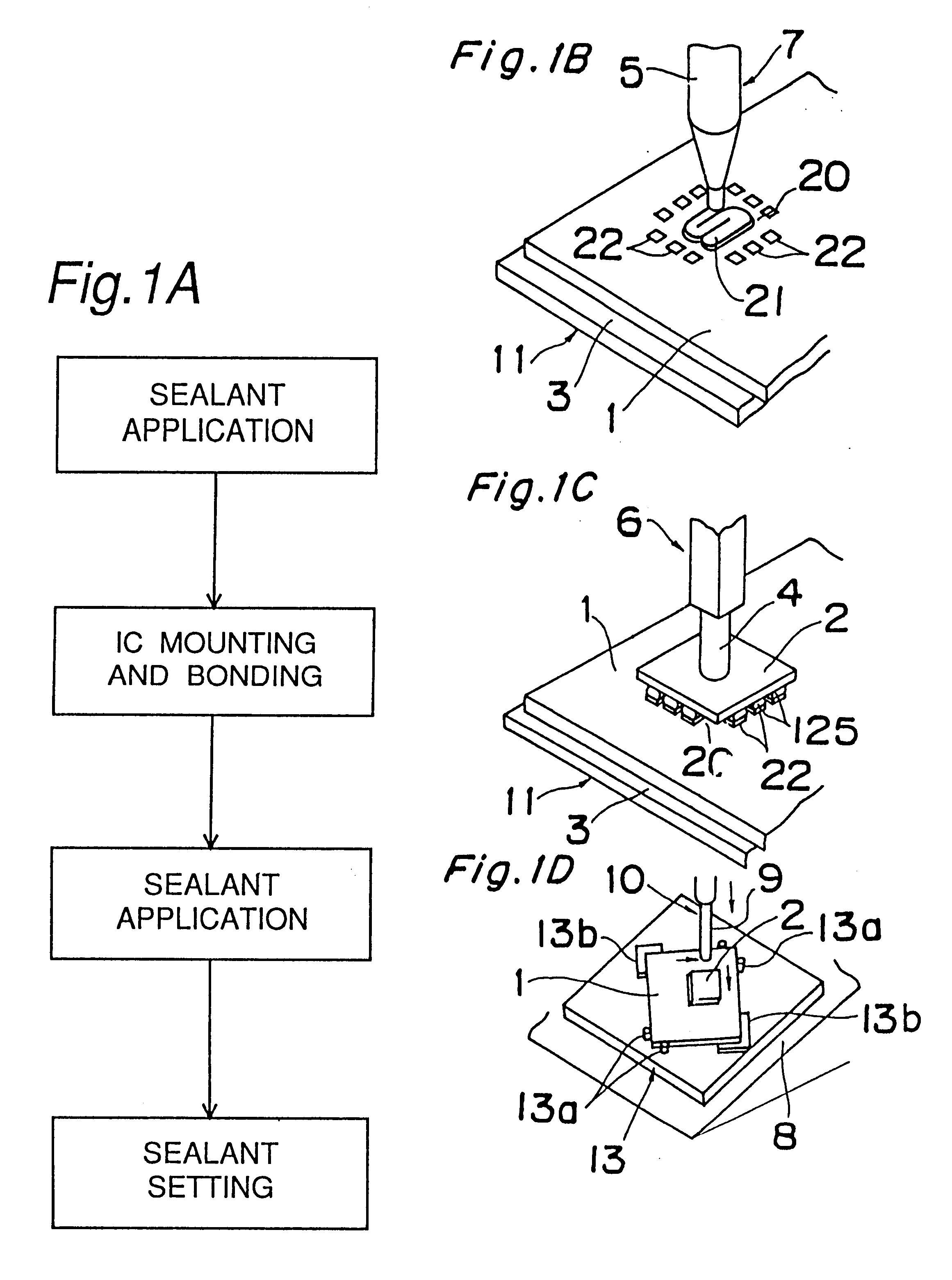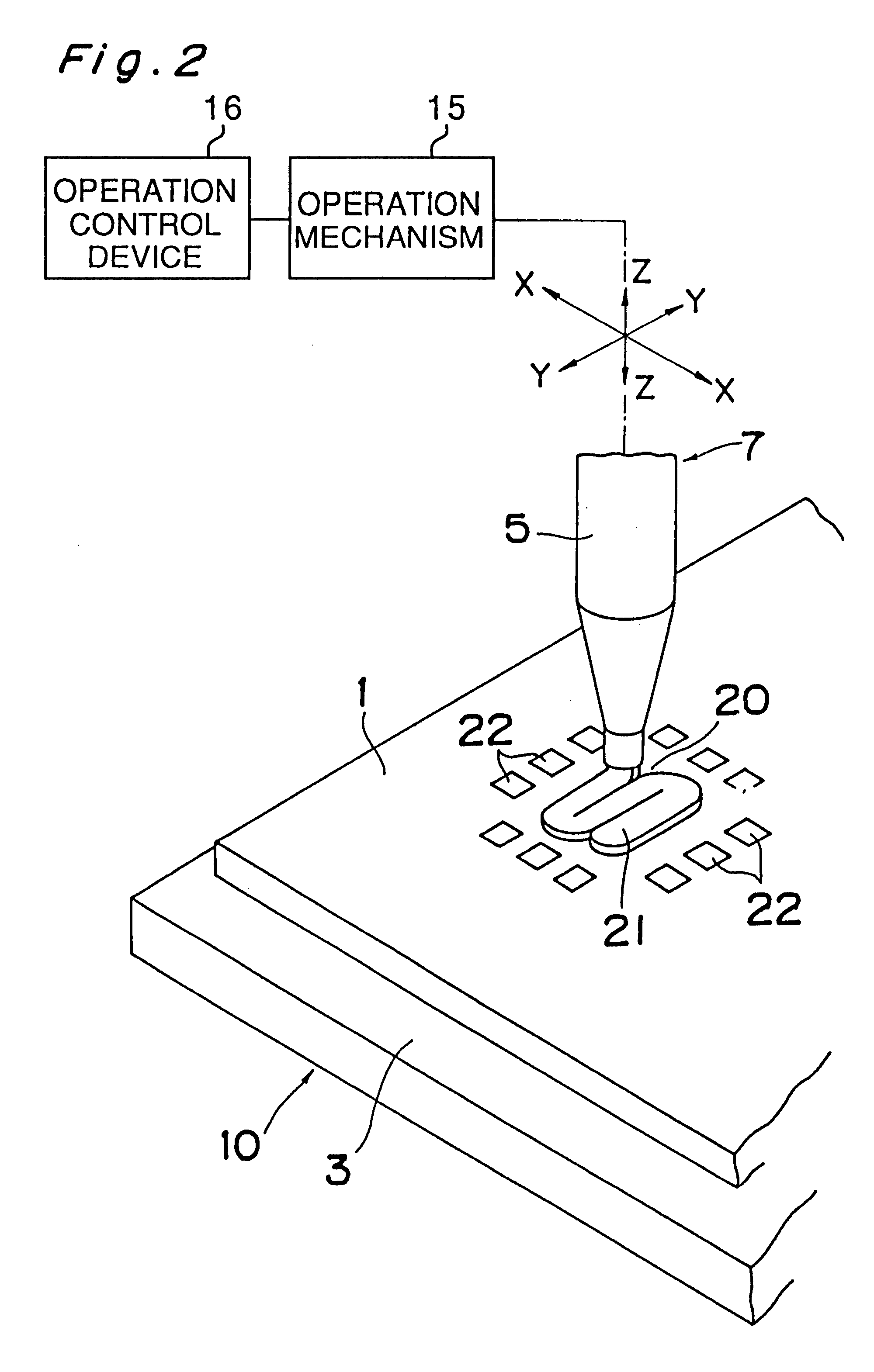Apparatus for mounting an electronic component
a technology for mounting apparatus and electronic components, applied in the direction of manufacturing tools, transportation and packaging, packaging, etc., can solve the problems of reducing production efficiency, forming air bubbles, and shortened time, and achieves shortening production time, reducing production costs, and improving production efficiency
- Summary
- Abstract
- Description
- Claims
- Application Information
AI Technical Summary
Benefits of technology
Problems solved by technology
Method used
Image
Examples
first embodiment
FIGS. 1 through 7 show a mounting method and a mounting apparatus according to a first embodiment of the present invention. As indicated in FIGS. 1B-1D, the first embodiment is related to mounting of an electronic component 2 to an object, e.g., a circuit board 1 on which the component is to be mounted. A mounting apparatus for the component 2 which comprises a positioning base 3 as a holding device 11 as shown in FIGS. 1B, 1C, 2, 3 for positioning and holding the circuit board 1, a bonding device using, for example, a suction nozzle 4 as shown in FIG. 1C as a bonding device 6 for arranging and bonding the electronic component 2 onto the circuit board 1, and a first sealant applying device 7 having a dispenser 5 arranged so as to be movable over the circuit board 1 in three dimensions as shown in FIGS. 1B, 2. Although it is satisfactory to position the bonding device 6 and the first applying device 7 at the same stage of the same machine, these devices may be positioned at different...
second embodiment
FIG. 8 shows a dispenser 5 which is particularly suitable for a first application process in a mounting method and a mounting apparatus according to a second embodiment of the present invention. The dispenser 5 has a plurality of discharge openings 5a for the sealant 21. In the second embodiment, three discharge openings 5 are provided and arranged in one row. However, the present invention is not restricted to this arrangement and a proper number of the discharge openings may be arranged in any manner.
The discharge openings 5a are connected to solenoid valves 33a, 33b, 33c by joints 31 and air tubes 32 respectively. Reference numerals 34, 35 in FIG. 8 indicate a cap of the dispenser 5 and an air leak prevention seal, respectively. The solenoid valves 33a, 33b, 33c are connected to regulators 36a, 36b, 36c, respectively. Each of the regulators 36a, 36b, 36c can regulate the pressure of air supplied from a compressor 201. Therefore, the discharge amount of the sealant 21 from each di...
third embodiment
FIG. 9 indicates a screen printing device for carrying out a first application process in a mounting method and a mounting apparatus according to a third embodiment of the present invention.
This operation will be described. The circuit board 1 is held on a stage 41 serving as the holding device. A screen 43 patterned by an emulsion 42 is positioned so as to agree with a wiring pattern of the board 1. The sealant 21 is placed on the screen 43. The sealant 21 is applied on the circuit board 1 by moving a squeegee 44 held in pressed contact with the screen 43. The above is the same as a general method of screen printing. Nearly the same operation and effect as achieved in the first embodiment are realized in the first application process.
In comparison with the writing method whereby the sealant 21 is applied flat in the breadthwise direction, an edge of the pattern of the emulsion 42 formed on the screen 43 is sharpened and is easily separated from the screen. The third embodiment can ...
PUM
| Property | Measurement | Unit |
|---|---|---|
| Time | aaaaa | aaaaa |
| Thickness | aaaaa | aaaaa |
| Pressure | aaaaa | aaaaa |
Abstract
Description
Claims
Application Information
 Login to View More
Login to View More - R&D
- Intellectual Property
- Life Sciences
- Materials
- Tech Scout
- Unparalleled Data Quality
- Higher Quality Content
- 60% Fewer Hallucinations
Browse by: Latest US Patents, China's latest patents, Technical Efficacy Thesaurus, Application Domain, Technology Topic, Popular Technical Reports.
© 2025 PatSnap. All rights reserved.Legal|Privacy policy|Modern Slavery Act Transparency Statement|Sitemap|About US| Contact US: help@patsnap.com



